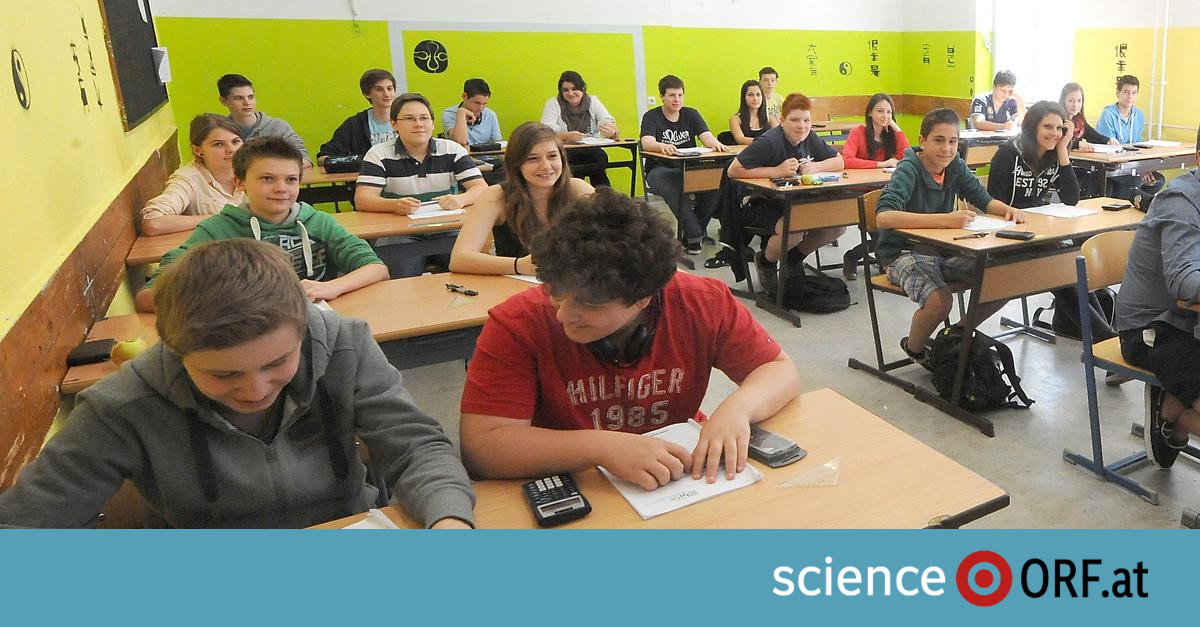The current world education report, which on Thursday from the Austrian UNESCO Commission is presented is dedicated to the so-called “non-state actors in education”. The range of these actors is large and ranges from denominational providers, such as the Catholic Church, to schools with specific pedagogical concepts (Montessori, Waldorf) to profit-oriented ones.
Boundaries are vague
Viewed worldwide, private schools are also very heterogeneous, writes UNESCO. Some of them are state-funded or managed, some are even state-owned, but still behave like companies and charge school fees, for example. “The lines between state and non-state actors are blurred,” according to UNESCO, the extent of privatization is partial not known at all. More important than the question of ownership is therefore how schools generally ensure quality, equality and inclusion.
Profit orientation spread worldwide
Nevertheless, a few figures: According to the report, 350 million children and young people attend non-government schools worldwide. About 40 percent of all pre-schools and kindergartens are run by private institutions, around 20 percent of all primary schools and 30 percent of all schools in the secondary education sector (middle schools, AHS). In the past 30 years, the proportion of private companies has increased steadily.
Ö1 shipment notice
There is also an article devoted to the topic knowledge up to date: 20.1., 1:55 p.m.
–
According to UNESCO, only around a quarter of all countries expressly prohibit primary and secondary schools from being profit-oriented. This is contrary to the UN goal of providing all people with free schooling for twelve years. High education costs are a problem, especially in the least developed countries, which is why UNESCO warned in December of increasing inequality in the education sector worldwide.
Public does not necessarily mean social
“The private offers have different functions,” says the educational researcher Lorenz Lassnigg from the Institute for Advanced Studies in Vienna to science.ORF.at. “Sometimes expensive facilities serve directly to social privilege and distinction. But private schools often also offer compensation for the lack of or too selective state institutions, albeit usually with some costs.”
Because the equation “public = inclusive and socially mixed” is often not correct. “Even public schools contribute to segregation,” says Lassnigg. Protracted discussions between concerned parents about the “right environment” and the “right school” for their daughter or son bear witness to this.
Sweden: Private publicly funded but inclusive
In Austria, the proportion of private schools is manageable, it lies according to UNESCO statistics at 13 percent. According to Lassnigg, public financing of denominational private schools is part of the international trend. “The OECD recommends this as the best model.” The high proportion of private kindergartens is often forgotten.
Sweden has gone one step further and made public funding of for-profit private schools possible thirty years ago. “As a result, international school chains, some of which are purely digital, have entered the market,” says Lassnigg. So that this does not lead to more inequality, Sweden has made the financing conditional. “At the publicly financed private schools, no additional contributions may be demanded from the parents, and there must also be no selection process for the children,” says Lassnigg.
As a result, stronger social segregation of the students was avoided – as desired by politicians. In this regard, Sweden is a role model for Austria, because in this country school fees can also be levied at publicly financed private schools – which reinforces the social differences, according to Lassnigg.

Creeping privatization: from digital to PISA
However, privatization in schools has not only something to do with the structure of the institution, but also with private services in the field of teaching. “A good example are digital instruments that come from companies – especially now in the pandemic,” says the educational researcher. “Many companies initially offer services free of charge in the non-profit sector. And then when they are widespread, you have to pay for them – and so they become a source of profit.”
Meanwhile be one global education industry emerged that offers such services. Other examples are teaching and learning materials and, last but not least, school tests such as the well-known PISA test. “Governments and states buy certain test methods on a large scale, for example from Educational Testing Service, which was also involved in the development of the PISA tests,” says Lassnigg, “This mixing of public politics and private interests has to be strengthened in the global academic field protests led against the OECD”.
consequences for democracy
Global companies, including public ones, are investing in this industry. States buy these services, and that weakens the public system. Why can this become a problem? Lorenz Lassnigg puts it this way: “Education is one of the most important fields of democracy. If education policy is no longer determined by the public sector but by the market, this will have social and political consequences.”
Incidentally, he himself let his daughter study at public schools. “Because children should have a wide range of social experiences – and so should their parents.”
–


:quality(80)/cdn-kiosk-api.telegraaf.nl/141e824c-79ba-11ec-9b69-0217670beecd.jpg?resize=150%2C150&ssl=1)